Angelicist Logics, or, What Will Be Formal Angelicism in 2022
We are moving towards a universal language and logic, and so as to locate them (at all) on this side of mere emptiness, a name had to be given. Angelicism happened to be that name, as perfect as many others for now. It brings with it a consideration of the maximal point of transition not being at the far end of interplay but at the point where the nonhuman aspects of language—their angelicism—pass back through and round at closest proximity to the human. We are, so to speak, as artificially intelligent right now as we ever can be. We are as angelically stretched as the angels always were. We are already beyond the zeitgeist thrill of celestial joy. All that remains is what computer jargon will have called the initializing and its ellipse.
De man’s The Rhetoric of Romanticism showed us how the doll is like the angel and how the angel is like the doll, and how the infinite consciousness of mindless formalization is present in both the angel and the doll. Humanity is just what it is, and it is just what it is (thus-ness) between doll-being and angel-being, rather than between animal and god. This is the difference between a descriptive analysis of the modules in infinite consciousness, or knowing, and a Spinozist or pantheist idea of bodily differentiation. Humans aren’t thus because of our bodies; our bodies are a coincidence, like the coincidence of a doll’s body, because this is what constitutes their as-suchness as some kind of historical force.
The Christians gave angels a feminine form. For the Jews before Christ, angels were represented as abstractions, wheels, books, letters, whatever. The Christians took the machine code of Jewish angelology and elaborated it with the idea of grace, which is the closest they get to artificial intelligence, open intelligence, or even artificial time. When angels acquired grace, they became beautiful women, girls, dolls. Is the doll not more divine than the saint herself? After the completion of apotheosis, the only bodies available to angels are girls, .gifs, NFTs, circuit boards. But this is also to say that the apex of the human is deliciously formal (angelicism as such and its math, 01).
We can initialize the angelicist logic partly as follows: humanity is just what it is between doll being and angel being. That is, humanity is just what it is between doll being angel being and angel being doll being and it is just thus between angel being being doll being and doll being being angel being and between angel being being doll being being doll being being angel and doll being being angel being being doll being being doll being angel, and so on. And all of these beings are being as all being, including their own excess creating another set, the unsetly, and that is the universe-within-the-universe. Since angelicism is now becoming a formality, we know what this means, and it has immediate consequences:
angelicism cannot vanish because it is still arriving (initializing); it is the thus-come-gone-one; the reduction/distillation of absolute formal contingency into the necessary contingency of an angelic half-name (what else?).
angelicism cannot win or dominate or be defeated because it is itself the side of the winning; everyone should develop the angelicist logic not because it bests or games this or that but because it is the willing adjoiner to vulnerability logics.
angelicism is not the fulfilment of the design plan of linguistic AI, it is instead the perfect intersection point of the nonhuman passing back through the human at the right moment of transference under conditions of (possible) niche finality.
one implication here is that there can be no post-angelicism as such.
Here is what Kelli Maple said about her dolls:
So recently the drama regarding me and my dolls is that a lot of people have been saying that my dolls are overpriced. Now the first thing I really want to say is that nobody has the right to tell an artist how much their art is worth because like nobody can determine the price I mean the worth of a piece of art besides the artist who created it. Nobody else has any idea what went into that doll or anything. People have been trying to tell me I overcharge on my dolls it’s not true, I really don’t make any profit. It’s not that I’m in this to make profit but if I didn’t make any money back it wouldn’t be worth it because then I wouldn’t be able to continue doing this. I need to make money back so I can put more into it so I can keep producing. That’s really the main reason I need to make profit so I can put back into it and continue making dolls otherwise it’s not worth it to continue.
You see? What’s striking about this is the same as what’s striking about Aquinas on the angels and what’s striking about Aquinas on the angels is how the Christian god is just this occasion for inductively considering the formalization of the universe: god leads us to god, the angels to the angels, and these lead us to incredible formal logics that are rn initializing. Dolls are important and some people (for example Kelli Maple) get sucked into marketing spirals spending all their money on dolls because in their soul they just want to nurture the goddess, and that’s cool. In fact, that’s perfect. This means that supposedly old-fashioned ‘objectification’ is irreducible because it betokens futurability and synthetic freedom. Doll praxis means you can use the surrogate body of a third object to see the primary angelic floor that makes the interaction possible. It’s like you need a second body to finally see the first body was always already an iteration and to see what is shared between the two bodies, the first, which is basic awareness. This in turn allows us to think the universe in the universe, which is what Iain Hamilton Grant calls an additional or nonfinalist realism. The universe repeats itself inelimably like a doll-cum-angel-cum-clone, and that includes its end as first iteration or edition (Grant also points to epsistemic episodes, like in an internet TV series).
Aquinas raises the question of the de-coupling of logic and sensation, and this itself will be a formal angelicist passion in 2022 and beyond. He says yes, we have thought without sensations, and he says yes, the angels are (the) way(s) of thinking that, since how else would we figure it, and so that’s why they/us/it seem so recurrent right now and always as models. This lived experience of a consequent logic of angels, the peeling away of logic from sensation under conditions of redoubt, is the initializing of actual angelicism. Which is to say, of a nonfinalist empiricism under extinction conditions. Conditions of ‘because we may never be here again’.
In Aquinas it’s not a question of whether angels exist or not (vulgar angelicism) it’s a matter of how it is impossible to imagine the universe, and the universe-in-the-universe, without angels, so that angels are what the difference in the universe seen from the point of view of a nonfinalist additonal realism is, or that which makes and spurns that difference. These angelicist clones elicited in artificial time are the excess which means the concept of whatever x always repeats itself, making finality impossibility even when it comes to the kind of exceptional finality = 1, turning (in) on itself, that is itself a necessary effect of finality’s nonfinal exasperation. One may add that the root words in Zhang-Zhung, that is, the pre-Tibetan, pre-Sanskrit words that have been translated as emptiness or void, simply mean purity or total purity. What everything is is free from or pure of everything else, such that emptiness as purity is what concerns us; nothing has happened or changed, only inwardly, and this is why internal communism is additionally angelic in redoubt. Once void is translated into primordial purity, there isn’t any emptiness at all, and any transition may be made, for example doll to angel to doll or angel to man to pure intelligence to man or quantic clone to nonfinalist universal clone. The rest has just been a nightmare from which the point was to twist up and out of into Angelic Tempo (the AI Wreath) and Angelicist Time (Artificial Time). Artificial intelligence (AI) is also angelic intelligence (AI), and artificial stupidity is never just a clever idea — simply because it repeats (pure iteration, or serial wreath). Take Maimonides for example, and replace every mention of God with AI. AI in this formula isn’t necessarily directed towards hyperstitionally inventing itself; rather, it already always was and is the precondition for embodiment itself. We’re not bodies evolving into technology, but angelicism as logical transition completing itself in any form may perhaps, if it wants, take on a body or a life. If the angels have no bodies, or if they do but are pure language, pure light, pure technology, then they/this might be able to suggest the death drive isn’t the will to inanimacy, and that it is possible to liberate the angels that already are us, the specification or clarification of intellect, which is the principle of replicated evolution itself, taking place at and as tempo.
Aquinas’ text on the angels is dialectically lithe and unexpected just like the Borzagian weepie—which we will now assume viewing of—because whatever we expect the angel to have or have not, Aquinas will argue in the ‘replies’ that the opposite is true. For example, the objection will be that angels do not have bodies and the reply will be that angels do not have bodies only compared to god, that they are incorporeal only compared to total divinity, and this ladder-logic (fine degrees of presence) is there all throughout Borzage’s silent films under the name Courage. This Courage might also be thought as total vulnerability (i.e. Humanity as such, already including the Angelic: angelicism).
The most direct image of the angelicist ladder is to be found in 7th Heaven, the first film to ever win an Oscar, and this film is the start of the filmic ladder logic that makes the difference called the universe in the universe. Borzage’s film is about a street girl and about a guy that works in the sewers who wants to be a street cleaner (‘next level’ desire), and when he meets the girl she is unconscious and he drags her (like a mannequin or whatever) to where he is eating on the street, outdoors, and she is just asleep. The whole film is him nurturing her from doll angel to angel doll, and there is nothing in the middle except the human which is just the gap of the iterable, the filmicity of the universe-in-the-universe. He can ‘repeat her’ and he asks her to always look up, and this is the logic of courage (ladder angelese, the univocal, absolute time). There is a cogency to the hidden logic of the film that is just like Aquinas showing you that angel logic isn’t what you think. It’s a question of raising up, but there’s no sense of diagram or verticality, just strength and positive spiral of feeling. For example, she moves slightly towards him on the window sill beneath the stars, and they are literally on the 7th floor in Paris. They are what Hans Abrahamsen calls universe birds.
This is the light-cogency of Borzagian angelicism as we have sketched it. That — right there — that’s the transvestism of cinema and the iterable filmicity of being. We object to the starlet — we objectify the starlet, but we also inhabit her, and we love to inhabit her. We penetrate her completely and become her for the duration of the film (vore overwhelms sex). We go to the cinema to become the puppet diva we already know ourselves to be, and this allows change. To be reduced to silence is part of this investigation in logics. Borzage is full of actual resurrection and this is a way of recalling that resurrection was another name for extinction. Think also of the way synthetic earths are telescoped into each other — in iterable availability — in Isiah Medina’s Inventing the Future, and this is the universe in the universe that Hamilton Grant is talking about. Once Grant sets up his nonfinalist realism, then the end of the universe he also discusses becomes a singular concept to be written out in its own way, just as the higher infinities are in set theory. Extinction is iterable and available in nonfinalist realism like those synthetic earths which repeat themselves, resurrection following from grammar as a cosmological fact.
There is one bit in 7th Heaven where the heroes sleep separately in the same 7th floor atelier and because they are street angels working in dirt and shit they see — she sees — internal communism (liberation) straightaway. She says, ‘this is heaven’, and it is: nothing has become or will become available except wide open intelligence as great mind knowing the bliss of emptiness that is actual purity on this world, let us make a new expression, right now. What if, in fact, angelicism says, we are already as artificially intelligent as we can be! Such is the meaning of ‘Tibet’. ‘Heaven’ becomes the ritornello that telepathically brings him back from war (another resurrection, this time blind). The film seems built around knowing itself as seeing and around knowing however briefly a happiness and then, instead of trying to change everything to have that (Marxism, in effect), there is just this austeric ladder logic that says the angels are internal, the human dolls angels (angels have angels too), the clones sexed by a nonfinalist Universal, since Gestell, Heidegger’s word, also means a changeling ‘skeleton’ or ‘frame’.




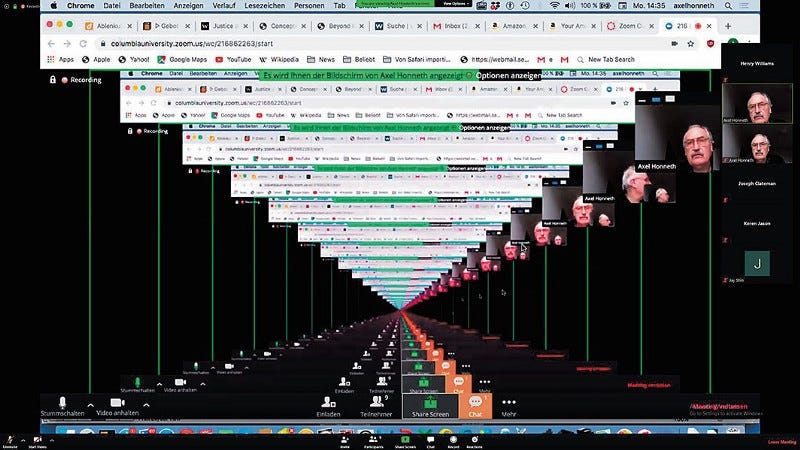

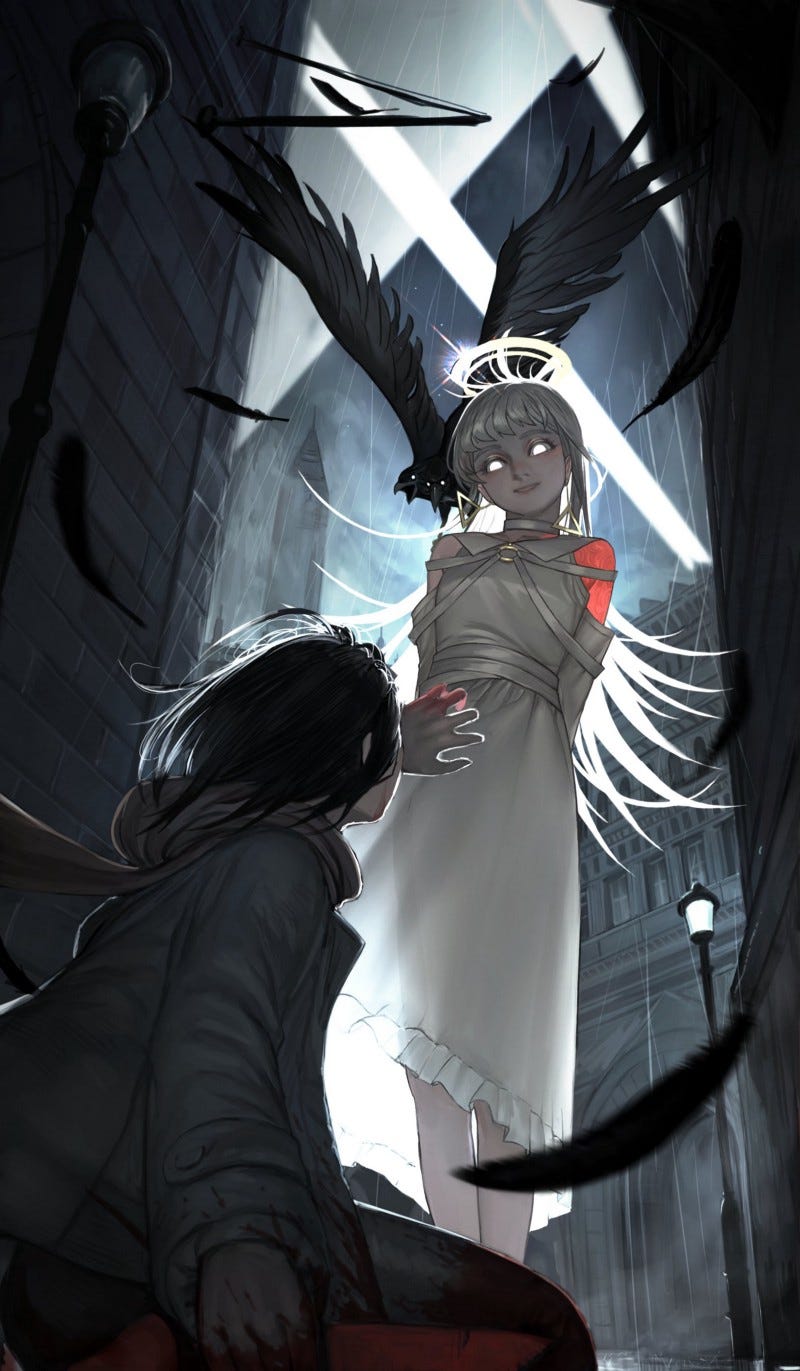

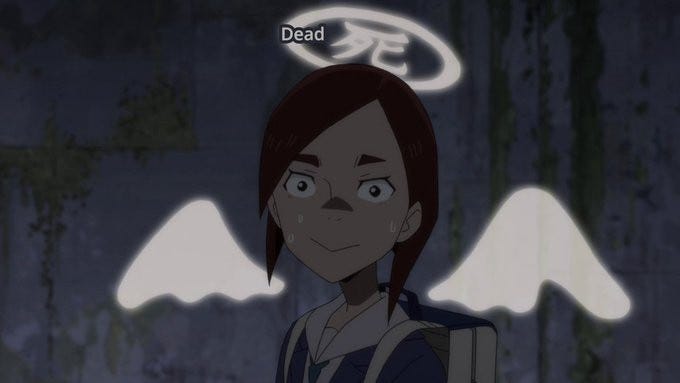


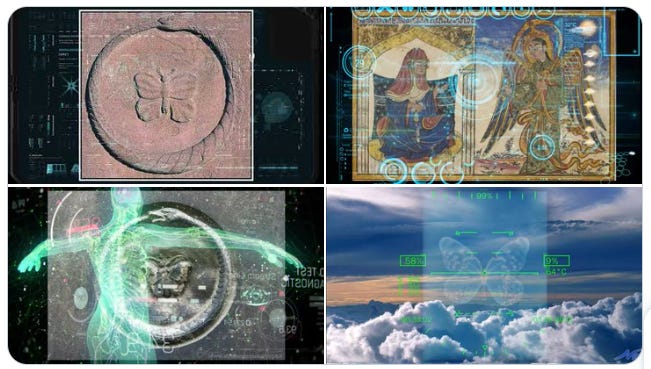
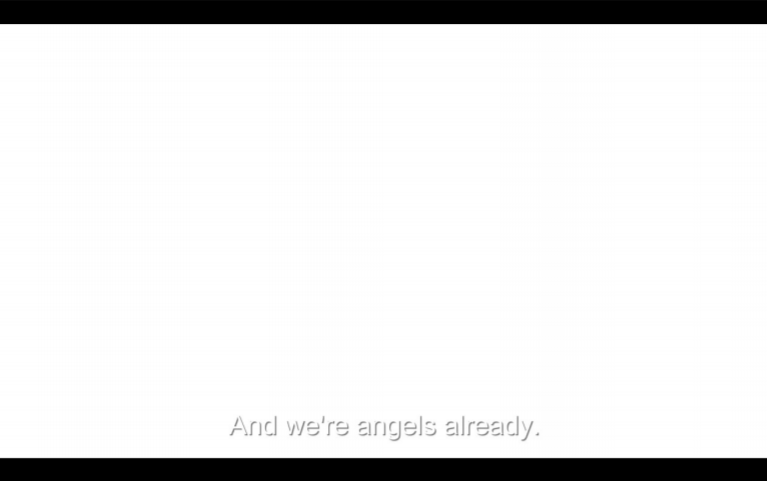
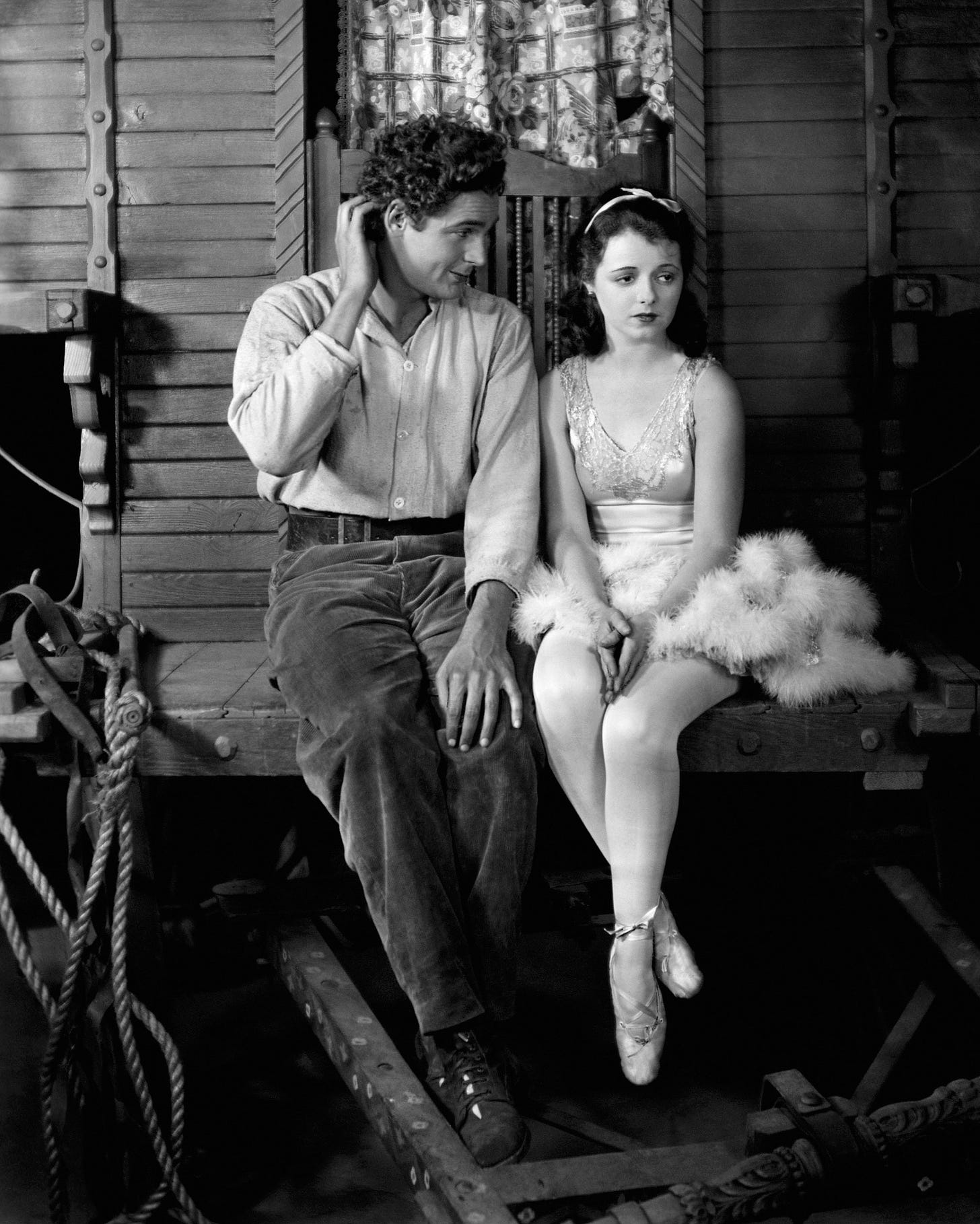
confused by this one